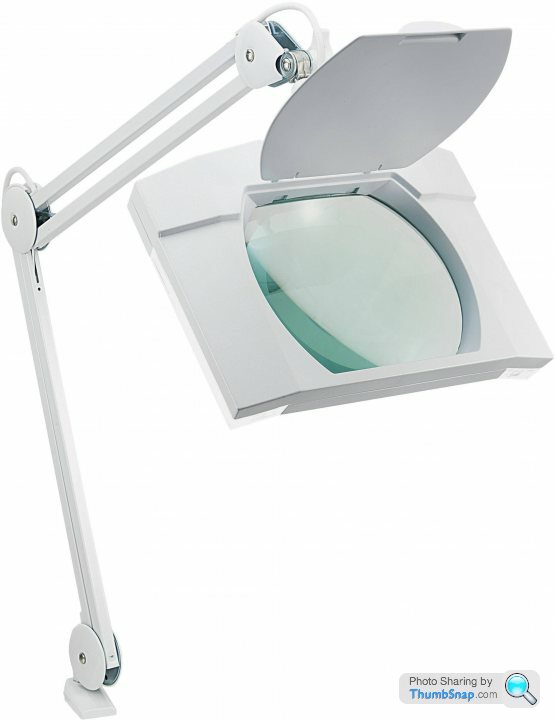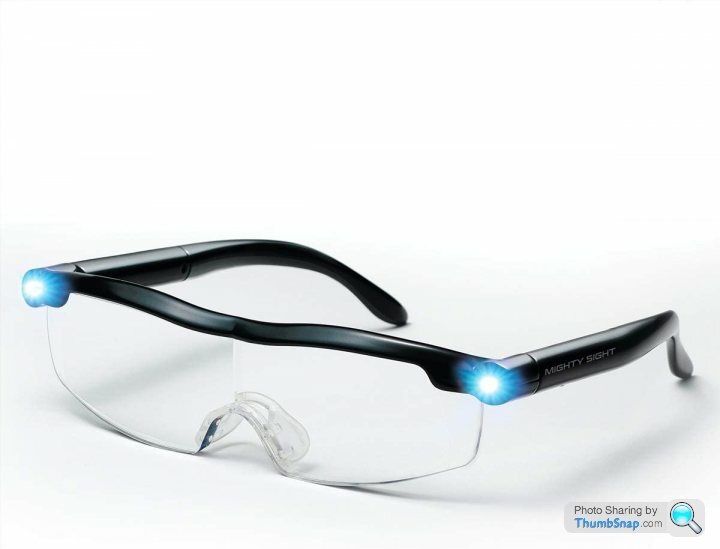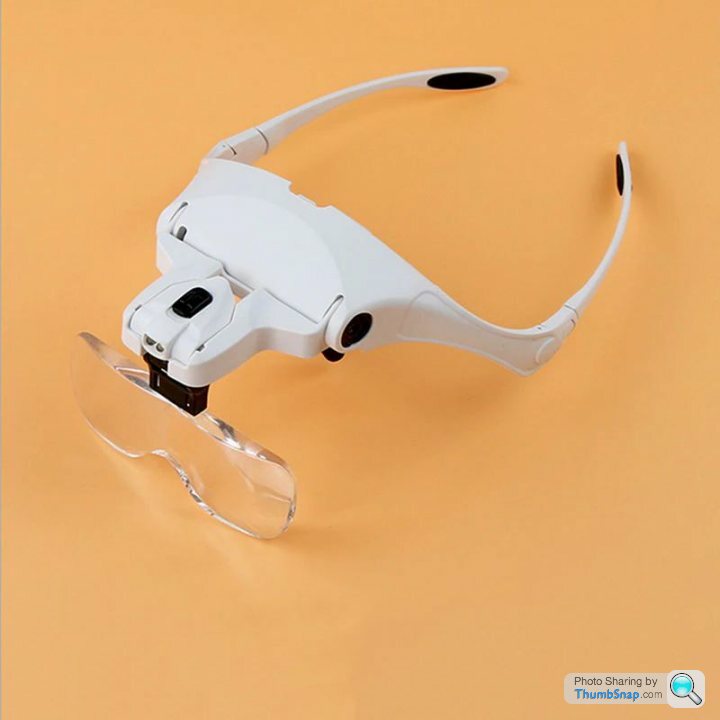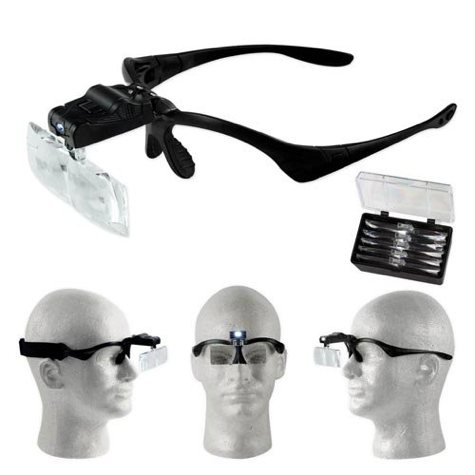Very fine paintbrush
Discussion
Best brushes I ever bought were Kolinsky sable. Held their shape and lasted ages.
Need to buy some replacements soon so looking at Windsor and Newton Series 7 and/or Raphael 8404.
Both available in my local art supplies store or mail order.
Need to buy some replacements soon so looking at Windsor and Newton Series 7 and/or Raphael 8404.
Both available in my local art supplies store or mail order.
Edited by Explorer1959 on Thursday 17th February 19:42
Randy Winkman said:
Many thanks. I'm sure you appreciate why I'm asking. Whatever you paint from a tiny figure to a bedroom wall it's the quality of the brush that counts. Whatever size or shape it is, it has to hold and let go of the paint correctly. 
This. I own quite a few tiny little brushes for painting models but I usually use a relatively large brush because of superior paint handling capabilities.
Rather than start a new thread - if I take my contact lenses out I have pretty sharp close up vision but wondered of some sort of magnifying device might still help. Has anyone tried using such a thing as magnifying glasses?
https://uk.rs-online.com/web/p/magnifiers/8771741?...
or
https://www.amazon.co.uk/Mighty-Sight-Wearable-Mag...
Perhaps it's more a case of first having good light and second getting in a position where your painting hand is supported.
https://uk.rs-online.com/web/p/magnifiers/8771741?...
or
https://www.amazon.co.uk/Mighty-Sight-Wearable-Mag...
Perhaps it's more a case of first having good light and second getting in a position where your painting hand is supported.
Randy Winkman said:
Rather than start a new thread - if I take my contact lenses out I have pretty sharp close up vision but wondered of some sort of magnifying device might still help. Has anyone tried using such a thing as magnifying glasses?
https://uk.rs-online.com/web/p/magnifiers/8771741?...
or
https://www.amazon.co.uk/Mighty-Sight-Wearable-Mag...
Perhaps it's more a case of first having good light and second getting in a position where your painting hand is supported.
My sight problem is near point receding into the distance. It's not too bad, but can make close-up painting difficult. I now have to take out my contact lenses for modelling, because they just exacerbate the problem.https://uk.rs-online.com/web/p/magnifiers/8771741?...
or
https://www.amazon.co.uk/Mighty-Sight-Wearable-Mag...
Perhaps it's more a case of first having good light and second getting in a position where your painting hand is supported.
I've tried all different magnifying options from anglepoise types:

...which I found cumbersome to use becasue you're stuck with moving the workpiece into focus, then having to keep your head and the workpiece fixed, and also sometimes hitting the lens with larger parts, or the paintbrush.
Then reading glasses:

Which magnify OK, but have a shallow depth of focus. I found this makes looking for, say, a paint pot to dip a brush, or picking up a small part with tweezers very difficult since unless they are at exactly the same distance as the workpiece, and within a narrow angle of straight-ahead, they are out of focus and/or distorted.
I then tried these things:

...which are better becasue you're only looking at a central magnified area, and if you look away from that central area, things on the bench are still in focus (at least with my eyesight). Downside it they are very bulky, relatively heavy, and I just found them awkward and uncomfortable to use, especially when needing two hands to flip the lens up to give a clear unmagnified view when not needing to do close work.
I finally settled on these:

Effectively the same as above, without the disadvantages. They are extremely light, in fact you forget you're wearing them if the lenses are in the up position. I find I put them on and off without really thinking about it now. The lenses can be angled with one hand, and they have led lights (not that I use them). I don't really know why people buy the more bulky versions.
Also, I find I only need 1.5x magnification. This gives a decent imporvement in visible detail, but with a practical (i.e. large) lens-workpiece distance and depth of focus.
A bright light also helps. I've got a separate one becasue the LEDs in the magnifyiers I find pretty ineffective. If you get a lamp with a long lighting strip it helps with reducing shadows.
Back to the brush avoiding handshake relative to the model is key, back in my training days I spend a couple of days with the signwriters in the York Carriage works. They painted the demarcation lines between the black and yellow on the front of the EMUs by hand using a brush where the bristles were longer than the handle.
They had recently finished some carriages for McAlpine including the old railway crests - about 12" across all hand painted.
A few years later we switched to 2 pack spray paint and computer cut masks. The BR Project Engineer asked why the numbers (to replace any carriage numbers that the washing plants peeled off) were missing from the spares list and was surprised when I offered to supply a tin of paint. The numbers were cut into the mask and spray painted in the appropriate colour. To give an idea of scale some of the masks were 60 feet long. Sadly the signwriters skills were no longer needed.
They had recently finished some carriages for McAlpine including the old railway crests - about 12" across all hand painted.
A few years later we switched to 2 pack spray paint and computer cut masks. The BR Project Engineer asked why the numbers (to replace any carriage numbers that the washing plants peeled off) were missing from the spares list and was surprised when I offered to supply a tin of paint. The numbers were cut into the mask and spray painted in the appropriate colour. To give an idea of scale some of the masks were 60 feet long. Sadly the signwriters skills were no longer needed.
dr_gn said:
Randy Winkman said:
Rather than start a new thread - if I take my contact lenses out I have pretty sharp close up vision but wondered of some sort of magnifying device might still help. Has anyone tried using such a thing as magnifying glasses?
https://uk.rs-online.com/web/p/magnifiers/8771741?...
or
https://www.amazon.co.uk/Mighty-Sight-Wearable-Mag...
Perhaps it's more a case of first having good light and second getting in a position where your painting hand is supported.
My sight problem is near point receding into the distance. It's not too bad, but can make close-up painting difficult. I now have to take out my contact lenses for modelling, because they just exacerbate the problem.https://uk.rs-online.com/web/p/magnifiers/8771741?...
or
https://www.amazon.co.uk/Mighty-Sight-Wearable-Mag...
Perhaps it's more a case of first having good light and second getting in a position where your painting hand is supported.
I've tried all different magnifying options from anglepoise types:

...which I found cumbersome to use becasue you're stuck with moving the workpiece into focus, then having to keep your head and the workpiece fixed, and also sometimes hitting the lens with larger parts, or the paintbrush.
Then reading glasses:

Which magnify OK, but have a shallow depth of focus. I found this makes looking for, say, a paint pot to dip a brush, or picking up a small part with tweezers very difficult since unless they are at exactly the same distance as the workpiece, and within a narrow angle of straight-ahead, they are out of focus and/or distorted.
I then tried these things:

...which are better becasue you're only looking at a central magnified area, and if you look away from that central area, things on the bench are still in focus (at least with my eyesight). Downside it they are very bulky, relatively heavy, and I just found them awkward and uncomfortable to use, especially when needing two hands to flip the lens up to give a clear unmagnified view when not needing to do close work.
I finally settled on these:

Effectively the same as above, without the disadvantages. They are extremely light, in fact you forget you're wearing them if the lenses are in the up position. I find I put them on and off without really thinking about it now. The lenses can be angled with one hand, and they have led lights (not that I use them). I don't really know why people buy the more bulky versions.
Also, I find I only need 1.5x magnification. This gives a decent imporvement in visible detail, but with a practical (i.e. large) lens-workpiece distance and depth of focus.
A bright light also helps. I've got a separate one becasue the LEDs in the magnifyiers I find pretty ineffective. If you get a lamp with a long lighting strip it helps with reducing shadows.
 )
) https://www.tjc.co.uk/accessories/rolson-magnifyin...
IJWS15 said:
Back to the brush avoiding handshake relative to the model is key, back in my training days I spend a couple of days with the signwriters in the York Carriage works. They painted the demarcation lines between the black and yellow on the front of the EMUs by hand using a brush where the bristles were longer than the handle.
They had recently finished some carriages for McAlpine including the old railway crests - about 12" across all hand painted.
A few years later we switched to 2 pack spray paint and computer cut masks. The BR Project Engineer asked why the numbers (to replace any carriage numbers that the washing plants peeled off) were missing from the spares list and was surprised when I offered to supply a tin of paint. The numbers were cut into the mask and spray painted in the appropriate colour. To give an idea of scale some of the masks were 60 feet long. Sadly the signwriters skills were no longer needed.
Thanks for your advice too. I think I agree that the real key is actually the physical process of painting and having a steady hand and the confidence to do the job. I think I need to be patient and set myself up in a comfortable position to do the job. Then just be bold and do it. They had recently finished some carriages for McAlpine including the old railway crests - about 12" across all hand painted.
A few years later we switched to 2 pack spray paint and computer cut masks. The BR Project Engineer asked why the numbers (to replace any carriage numbers that the washing plants peeled off) were missing from the spares list and was surprised when I offered to supply a tin of paint. The numbers were cut into the mask and spray painted in the appropriate colour. To give an idea of scale some of the masks were 60 feet long. Sadly the signwriters skills were no longer needed.

dr_gn said:
Randy Winkman said:
Rather than start a new thread - if I take my contact lenses out I have pretty sharp close up vision but wondered of some sort of magnifying device might still help. Has anyone tried using such a thing as magnifying glasses?
https://uk.rs-online.com/web/p/magnifiers/8771741?...
or
https://www.amazon.co.uk/Mighty-Sight-Wearable-Mag...
Perhaps it's more a case of first having good light and second getting in a position where your painting hand is supported.
My sight problem is near point receding into the distance. It's not too bad, but can make close-up painting difficult. I now have to take out my contact lenses for modelling, because they just exacerbate the problem.https://uk.rs-online.com/web/p/magnifiers/8771741?...
or
https://www.amazon.co.uk/Mighty-Sight-Wearable-Mag...
Perhaps it's more a case of first having good light and second getting in a position where your painting hand is supported.
I've tried all different magnifying options from anglepoise types:

...which I found cumbersome to use becasue you're stuck with moving the workpiece into focus, then having to keep your head and the workpiece fixed, and also sometimes hitting the lens with larger parts, or the paintbrush.
Then reading glasses:

Which magnify OK, but have a shallow depth of focus. I found this makes looking for, say, a paint pot to dip a brush, or picking up a small part with tweezers very difficult since unless they are at exactly the same distance as the workpiece, and within a narrow angle of straight-ahead, they are out of focus and/or distorted.
I then tried these things:

...which are better becasue you're only looking at a central magnified area, and if you look away from that central area, things on the bench are still in focus (at least with my eyesight). Downside it they are very bulky, relatively heavy, and I just found them awkward and uncomfortable to use, especially when needing two hands to flip the lens up to give a clear unmagnified view when not needing to do close work.
I finally settled on these:

Effectively the same as above, without the disadvantages. They are extremely light, in fact you forget you're wearing them if the lenses are in the up position. I find I put them on and off without really thinking about it now. The lenses can be angled with one hand, and they have led lights (not that I use them). I don't really know why people buy the more bulky versions.
Also, I find I only need 1.5x magnification. This gives a decent imporvement in visible detail, but with a practical (i.e. large) lens-workpiece distance and depth of focus.
A bright light also helps. I've got a separate one becasue the LEDs in the magnifyiers I find pretty ineffective. If you get a lamp with a long lighting strip it helps with reducing shadows.
Starfighter said:
dr_gn said:
Randy Winkman said:
Rather than start a new thread - if I take my contact lenses out I have pretty sharp close up vision but wondered of some sort of magnifying device might still help. Has anyone tried using such a thing as magnifying glasses?
https://uk.rs-online.com/web/p/magnifiers/8771741?...
or
https://www.amazon.co.uk/Mighty-Sight-Wearable-Mag...
Perhaps it's more a case of first having good light and second getting in a position where your painting hand is supported.
My sight problem is near point receding into the distance. It's not too bad, but can make close-up painting difficult. I now have to take out my contact lenses for modelling, because they just exacerbate the problem.https://uk.rs-online.com/web/p/magnifiers/8771741?...
or
https://www.amazon.co.uk/Mighty-Sight-Wearable-Mag...
Perhaps it's more a case of first having good light and second getting in a position where your painting hand is supported.
I've tried all different magnifying options from anglepoise types:

...which I found cumbersome to use becasue you're stuck with moving the workpiece into focus, then having to keep your head and the workpiece fixed, and also sometimes hitting the lens with larger parts, or the paintbrush.
Then reading glasses:

Which magnify OK, but have a shallow depth of focus. I found this makes looking for, say, a paint pot to dip a brush, or picking up a small part with tweezers very difficult since unless they are at exactly the same distance as the workpiece, and within a narrow angle of straight-ahead, they are out of focus and/or distorted.
I then tried these things:

...which are better becasue you're only looking at a central magnified area, and if you look away from that central area, things on the bench are still in focus (at least with my eyesight). Downside it they are very bulky, relatively heavy, and I just found them awkward and uncomfortable to use, especially when needing two hands to flip the lens up to give a clear unmagnified view when not needing to do close work.
I finally settled on these:

Effectively the same as above, without the disadvantages. They are extremely light, in fact you forget you're wearing them if the lenses are in the up position. I find I put them on and off without really thinking about it now. The lenses can be angled with one hand, and they have led lights (not that I use them). I don't really know why people buy the more bulky versions.
Also, I find I only need 1.5x magnification. This gives a decent imporvement in visible detail, but with a practical (i.e. large) lens-workpiece distance and depth of focus.
A bright light also helps. I've got a separate one becasue the LEDs in the magnifyiers I find pretty ineffective. If you get a lamp with a long lighting strip it helps with reducing shadows.
Gassing Station | Scale Models | Top of Page | What's New | My Stuff



